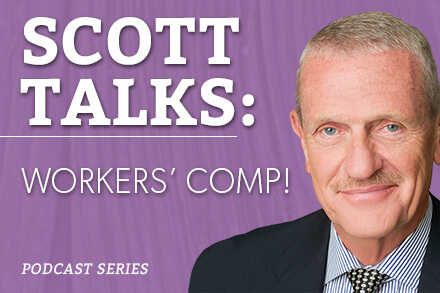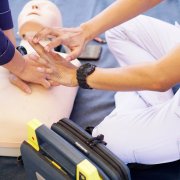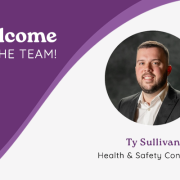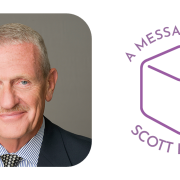Learn about our methods for minimizing costs by preventing accidents from happening in the first place with loss control.
In one of the previous podcasts I made the comment that the cheapest claim to pay for is the one it doesn’t happen or if you don’t hurt people it doesn’t cost you a lot of money. And again, nothing can be more accurate. We’re guilty of doing the same thing for loss control as a lot of the insurance companies do, of basically conducting audits or walkthroughs. So, our loss control people would show up, do a tour of the facility, and look for obvious things that can hurt people and point them out and try to get people to fix them. And there’s a couple of problems with that. It’s what I call with my safety and health background find and fix safety.
So, you’re looking for conditions, you’re looking for an unguarded machine, or you’re looking for an unattended forklift, or you’re looking for a blocked exit, and those aren’t necessarily things that hurt people, yet they are considered to be what’s called an unsafe condition. The majority of the accidents and injuries that happen on the job, and some people will say it’s an 80/20 rule – I think it’s more like 98 percent of the claims we have are the result of unsafe acts or unsafe work practices. And that’s why I say people doing the wrong thing, using the wrong tool, not following the correct operating procedure or just making really, really bad decisions about how they’re going to do their job that ends up creating that injury.
So, if you make the assumption that the majority of the accidents are going to happen on the job are going to happen as a result of these unsafe acts and unsafe work practices how do you focus on those? So, we posed that question to our loss control people and said in the number of visits that they make to the 325 or so companies that we manage workers’ comp for. How often do you catch somebody in the middle of an unsafe act, where you can correct their behavior or point out their behavior so that the company can then work with us to change that behavior so they’re not doing it the wrong way in the first place. And a quick answer obviously is virtually never.
We never trip over somebody who’s just doing something the wrong way that could produce an injury so that we can help correct that. So how do we get people to stop doing unsafe acts, and unsafe work practices and minimize the number of claims that we have? We’re not sure if it’s if it’s going work, it’s a whole new idea of looking at loss control that we’ve created over the last year and a half that we’re just starting to roll out now, but it’s all based on a simple premise that the majority of the accidents that we see happen on the worksite are the same no matter which of our groups it has. We’ve looked at other insurance companies across the country and other self-insurance groups. But somewhere between 70 and 85 percent of our claims and our cost of claims fall into three very basic categories of accidents.
The first one is slips trips and falls – in New England in the winter time. It’s no surprise that we have ice and snow on the ground and a lot of people slip and fall and in one year about four years ago we actually had over a million and a half dollars of workers’ comp claims from people slipping and falling on ice and snow not only in their own place of business. It mostly is coming from the parking lot into work. We have a lot of companies that visit customers on the road. They are making deliveries to customer sites so they’re on work sites that the company that they work for really can’t control.
They can’t make sure they’re plowed, salted, sanded, and whatever. So that’s the first type of claim that we have slips trips and falls. The second look was call sprains and strains. And again, that’s no surprise. If people are lifting too much if they are working in awkward postures so that they are suffering what a lot of people call ergonomic injuries and I don’t like that term ergonomics because it’s more an awkward posture. If I’m not using proper lifting techniques and I want to pick up 80 or 90 pounds 150 times a day I’m probably going to find a way to hurt myself somehow doing that if I don’t have proper posture and if I’m not listening correctly or if I don’t have a better mechanism or a piece of equipment to help me do that.
The second type of claim that we have are sprains and strains and those are basically soft tissue injuries: neck, shoulders, hands, arms, elbows, and backs and those are some of the hardest claims to diagnose and to treat especially with an aging workforce. And that’s a whole bigger problem. We’re finding more, and more injuries of that type coming from workers who have worked at the same establishment for 20 or 30 years where their bodies are just wearing out.
We’ve got people who’ve been doing the same tasks same job for 25 or 30 years that are starting to see wrists, shoulders, elbows, and necks failing – wearing out because of the fact that they’ve been doing the exact same job for all that period of time. And the last of the three types of claims that we see a lot of are what they call caught by struck by, and those are typically people sticking their hands into machines that are either not guarded, guarded improperly, or there are moving objects in their work area that they’re being hit by or that they’re walking into. I know that sounds kind of crazy but you wouldn’t believe the number of incidents that we have from people in warehouses where a forklift whether it’s manually operated or a gas powered forklift that’s coming through an intersection where somebody’s just not paying attention to it and he either walks into the moving vehicle or the moving vehicle actually walks into them and extrapolate that across you know 325 workplaces.
We’ve got lots of people are getting caught by struck by types of claims. So, if that ends up causing about 75 to 80 percent of our claims and claims costs, we decided that those are the things that we should focus on. So, if you believe that it’s unsafe act which it is. We know that. And if you believe that those are the three major types of claims we know that we can now go into say, OK, where are you apt to have locations, processes, activities where somebody can slip and fall.
Where are you apt to have situations where you can have people who get sprains and strains, and what about the struck by caught by. So we can actually focus on those three types of accidents, because even though they are the result of unsafe acts and work practices if we know how it’s happened in – I’ll use lumber yards as an example we have about 20 lumber yards in our lumber group – if we know how slips and falls are occurring in one lumber yard we can go in and share that information with every other lumber yard so that we might be able to minimize the number of slips and falls they have by taking a look at the slips and falls that we’ve already had.
In our new group we have lots of social service companies who have a huge number of people on the road going to visit clients on a day to day basis. So if we look at the way that they’ve had these claims in the past we may be able to mitigate them by putting procedures and processes in place and then training and educating the workers to go out to do this of the right procedures that they’re supposed to follow. So if we can get them to understand what the right behavior is, what the right work practice is, and get them to do it that way; our hope is that we will eventually minimize the number of these claims that we’re having and even if we don’t minimize the number of claims will minimize the severity so the cost of those claims will go down.
We’ve just started rolling this whole program out about Labor Day in 2018. We’re also taking and asking for every member company to send us somebody that we are enrolling in what we’re calling our loss control coordinator academy. We’re actually teaching them about these three types of claims and providing them with a bunch of available content from OSHA, from our own website, and from the excess insurance companies that we use so that they can actually build a safety program for their own company.
So now what our loss control people go out to visit a member company they have that loss control coordinator to work with to facilitate working on those three types of claims to try to minimize the number of claims, minimize the cost of those claims, and hopefully ultimately we’ll get it to the point where if we don’t hurt people it just will cost a lot of money. So, this is a good plan. We think we’ll be able to tell you in a couple of years whether it’s more effective than what we’re doing already. Even though the numbers that we’re putting up are semi-spectacular, we’re hoping to make them even better. We’d be more than happy to come and talk to you about your workers’ comp program if you fit into any one of our groups. So, either go online or give us a call and be happy to come and talk to you.





